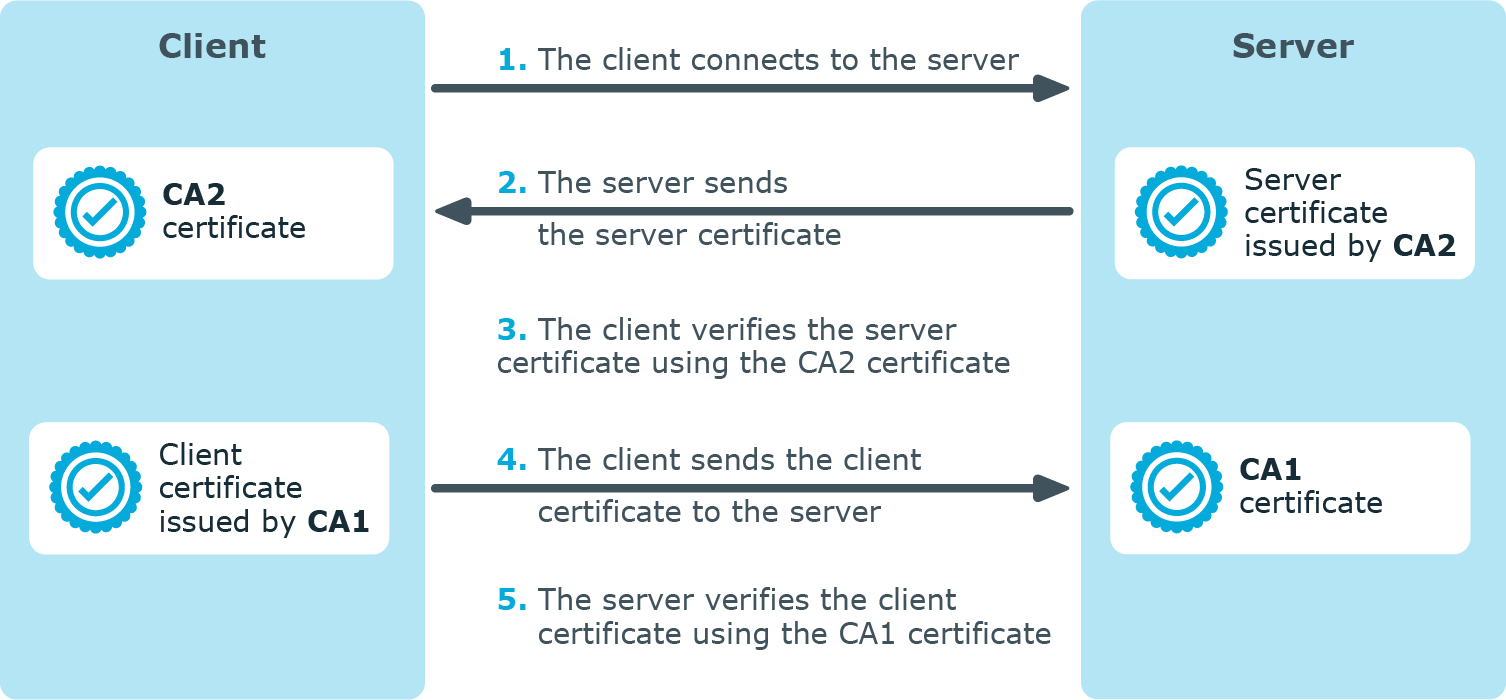Secure logging using TLS
The AxoSyslog application can send and receive log messages securely over the network using the Transport Layer Security (TLS) protocol using the network() and syslog() drivers.
Note
This chapter describes how to use TLS encryption when using the standard syslog protocols, that is, thenetwork() and syslog() drivers, for example, to forward log messages between two AxoSyslog nodes, or to send log data to a log server. Other destinations that support TLS-encryption are not discussed in this chapter (for example, http()).
TLS uses certificates to authenticate and encrypt the communication, as illustrated on the following figure:

The client authenticates the server by requesting its certificate and public key. Optionally, the server can also request a certificate from the client, thus mutual authentication is also possible.
In order to use TLS encryption in syslog-ng, the following elements are required:
-
A certificate on the AxoSyslog server that identifies the server.
-
The certificate of the Certificate Authority that issued the certificate of the AxoSyslog server (or the self-signed certificate of the AxoSyslog server) must be available on the AxoSyslog client.
When using mutual authentication to verify the identity of the clients, the following elements are required:
-
A certificate must be available on the AxoSyslog client. This certificate identifies the AxoSyslog client.
-
The certificate of the Certificate Authority that issued the certificate of the AxoSyslog client must be available on the AxoSyslog server.
Mutual authentication ensures that the AxoSyslog server accepts log messages only from authorized clients.
For more information about configuring TLS communication, see Encrypting log messages with TLS.
For more information about TLS-related error messages, see Error messages.